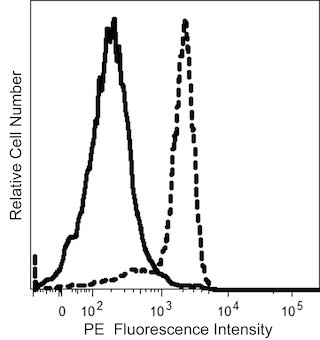-
Reagents
- Flow Cytometry Reagents
-
Western Blotting and Molecular Reagents
- Immunoassay Reagents
-
Single-Cell Multiomics Reagents
- BD® OMICS-Guard Sample Preservation Buffer
- BD® AbSeq Assay
- BD® Single-Cell Multiplexing Kit
- BD Rhapsody™ ATAC-Seq Assays
- BD Rhapsody™ Whole Transcriptome Analysis (WTA) Amplification Kit
- BD Rhapsody™ TCR/BCR Next Multiomic Assays
- BD Rhapsody™ Targeted mRNA Kits
- BD Rhapsody™ Accessory Kits
- BD® OMICS-One Protein Panels
-
Functional Assays
-
Microscopy and Imaging Reagents
-
Cell Preparation and Separation Reagents
-
- BD® OMICS-Guard Sample Preservation Buffer
- BD® AbSeq Assay
- BD® Single-Cell Multiplexing Kit
- BD Rhapsody™ ATAC-Seq Assays
- BD Rhapsody™ Whole Transcriptome Analysis (WTA) Amplification Kit
- BD Rhapsody™ TCR/BCR Next Multiomic Assays
- BD Rhapsody™ Targeted mRNA Kits
- BD Rhapsody™ Accessory Kits
- BD® OMICS-One Protein Panels
- Austria (English)
-
Change country/language
Old Browser
This page has been recently translated and is available in French now.
Looks like you're visiting us from United States.
Would you like to stay on the current country site or be switched to your country?
BD® OMICS-One Immune Profiler Protein Panel


Regulatory Status Legend
Any use of products other than the permitted use without the express written authorization of Becton, Dickinson and Company is strictly prohibited.
Preparation And Storage
Recommended Assay Procedures
This reagent is provided lyophilized in a pre-titrated format
1. Remove the BD® OMICS-One Immune Profiler Protein Panel tube from the foil bag and bring up to room temperature for 5 minutes.
2. Make sure the pellet is located at the bottom of the tube.
3. Add 35 µL of nuclease-free water to the bottom of the tube and allow antibodies to reconstitute for 5 minutes at room temperature.
4. Store the reconstituted antibodies on ice until the cells are ready for staining.
Note: Reconstituted antibodies should be used within 24 hours from reconstitution of the lyophilized format.
5. For drop-in of 60 plex or lower, prepare the BD® AbSeq labeling MasterMix in a 1.5-mL LoBind tube on ice using the procedure in Table 1 for
sequential labeling with or without Sample Tags, or the procedure in Table 2 for co-labeling with Sample Tags.
Note: For drop-in with more than 60 plex, reach out to technical support for calculation.
6. Pipet-mix the BD® AbSeq labeling MasterMix for drop-ins. Briefly centrifuge to collect the contents at the bottom, and place back on ice.
7. For sequential labeling with Sample Tags or no Sample Tags, for each sample, add 140 μL BD® AbSeq labeling MasterMix of
drop-ins to the tube containing 35 μL reconstituted IP solution to make a total volume of 175 μL.
For co-labeling with Sample Tags, for each sample, add 120 μL BD® AbSeq labeling MasterMix of drop-ins and 20 μL Sample Tag to the tube
containing 35 μL reconstituted IP solution to make a total volume of 175 μL.
8. Pipet-mix the mixture, briefly centrifuge to collect the contents at the tube bottom, and place back on ice.
9. Centrifuge cells at 400 × g for 5 minutes. If Fc Block is used, proceed to step 10. If Fc Block is not used. skip to step 11.
10. (Optional) For samples containing myeloid and B lymphocytes, BD Biosciences recommends blocking nonspecific Fc Receptor–mediated
false-positive signals with Human BD Fc Block (Cat. No. 564220).
a. To perform blocking, prepare the Fc Block MasterMix in a new 1.5-mL LoBind tube on ice. See Table 3.
b. Pipet-mix the Fc Block MasterMix and briefly centrifuge. Place on ice.
c. Remove the supernatant from the cells without disturbing the pellet.
d. Resuspend the cells from Step 9 in 25 μL of Fc Block MasterMix.
e. Incubate the cells at room temperature (15°C to 25°C) for 10 minutes
f. Add 175 μL of BD® AbSeq labeling MasterMix from Step 7 into the cell suspension. Pipet-mix and proceed to Step 12.
11. Remove the supernatant from the cells prepared in step 9 without disturbing the pellet. Add 25 μL Stain Buffer (FBS) to the 175 μL of
BD® AbSeq labeling MasterMix from Step 7 to make a total volume of 200 μL. Resuspend the cell pellet in 200 μL total volume. Pipet-mix.
12. Transfer the cells with BD® AbSeq labeling MasterMix into a new 5-mL polystyrene Falcon tube.
13. Stain the cells on ice for 30 minutes.
14. Add 3 mL Stain Buffer (FBS) to labelled cells and pipet-mix.
15. Centrifuge at 400 x g for 5 minutes.
16. Uncap each tube and invert to decant supernatant into biohazardous waste. Keep the tube inverted and gently blot on a
lint-free wiper to remove residual supernatant from tube rim.
17. Repeat steps 14-16 twice more for a total of 3 washes.
18. Resuspend the final washed cell pellet in 620 µL cold Sample Buffer from the BD Rhapsody™ Enhanced Cartridge Reagent V3
(Cat. No. 667052) and proceed to single cell capture. See BD Rhapsody™ HT Single-Cell Analysis System Single-Cell
Capture and cDNA Synthesis Protocol (Doc ID 23-24252) or BD Rhapsody™ HT Xpress System Single-Cell Capture
and cDNA Synthesis Protocol (Doc ID 23-24253) for additional details. See Table 4 for AbSeq Specificities, Clone Names,
Sequence IDs, and Barcode Sequences. The Barcode Sequence and Sequence ID are specific to each individual AbSeq antibody.
Warning: All biological specimens and materials are considered biohazardous. Handle as if capable of transmitting infection
and dispose using proper precautions in accordance with federal, state, and local regulations. Never pipette by mouth. Wear suitable
protective clothing, eyewear, and gloves.
Product Notices
- Source of all serum proteins is from USDA inspected abattoirs located in the United States.
- The production process underwent stringent testing and validation to assure that it generates a high-quality conjugate with consistent performance and specific binding activity. However, verification testing has not been performed on all conjugate lots.
- Please refer to http://regdocs.bd.com to access safety data sheets (SDS).
- For U.S. patents that may apply, see bd.com/patents.
- Caution: Sodium azide yields highly toxic hydrazoic acid under acidic conditions. Dilute azide compounds in running water before discarding to avoid accumulation of potentially explosive deposits in plumbing. Follow state and local guidelines when disposing of hazardous waste.
- Please refer to https://www.bdbiosciences.com/en-us/resources/protocols/single-cell-multiomics for technical protocols.
- Go to https://abseq-ref-gen.genomics.bd.com/to access AbSeq reference files in FASTA format for bioinformatics analyses.
Data Sheets
Companion Products



.jpg?imwidth=320)


The BD® OMICS-One Immune Profiler (IP) Protein Panel consists of 30 different specificities against major immune markers in a single tube. Designed and optimized to work on the BD Rhapsody™ System, the IP is tested to work seamlessly alongside the BD Rhapsody™ Whole Transcriptome Analysis (WTA) Amplification Kit, Targeted mRNA Kits, BD® Single-Cell Multiplexing Kit (SMK), BD® Intracellular CITE-seq (IC-AbSeq), and BD Rhapsody™ TCR/BCR Next Multiomic Assay for human. Each individual antibody exists at an optimal concentration within the 30-plex to enable superior target and population resolution. The individual antibodies were each conjugated to an oligonucleotide that contains a specific antibody barcode sequence flanked by a polyA tail on the 3' end and a common PCR handle (PCR primer binding site) on the 5' end. All AbSeq barcode sequences were generated in silico with minimal sequence similarity to the human genomes, have low predicted secondary structure, and have high Hamming distance within the BD® antibody-oligo portfolio, to allow for sequencing error correction and unique mapping. The polyA tail of the oligonucleotide allows the barcode sequence to be captured by the BD Rhapsody™ Enhanced Cell Capture Beads. The 5' PCR handle allows for efficient sequencing library generation for various sequencing platforms.
No Citations Are Available for this Product
Please refer to Support Documents for Quality Certificates
Global - Refer to manufacturer's instructions for use and related User Manuals and Technical data sheets before using this products as described
Comparisons, where applicable, are made against older BD Technology, manual methods or are general performance claims. Comparisons are not made against non-BD technologies, unless otherwise noted.
For Research Use Only. Not for use in diagnostic or therapeutic procedures.